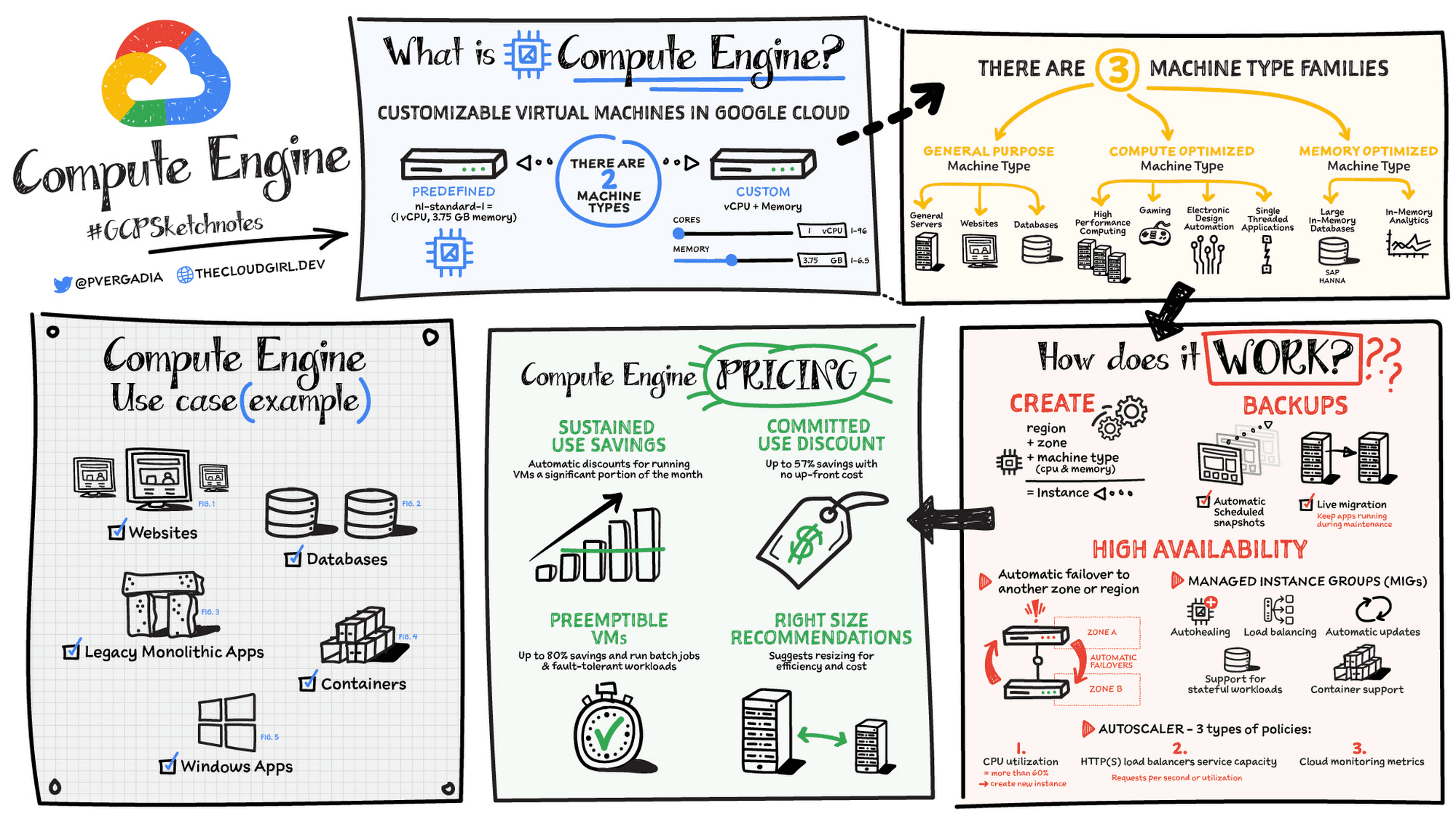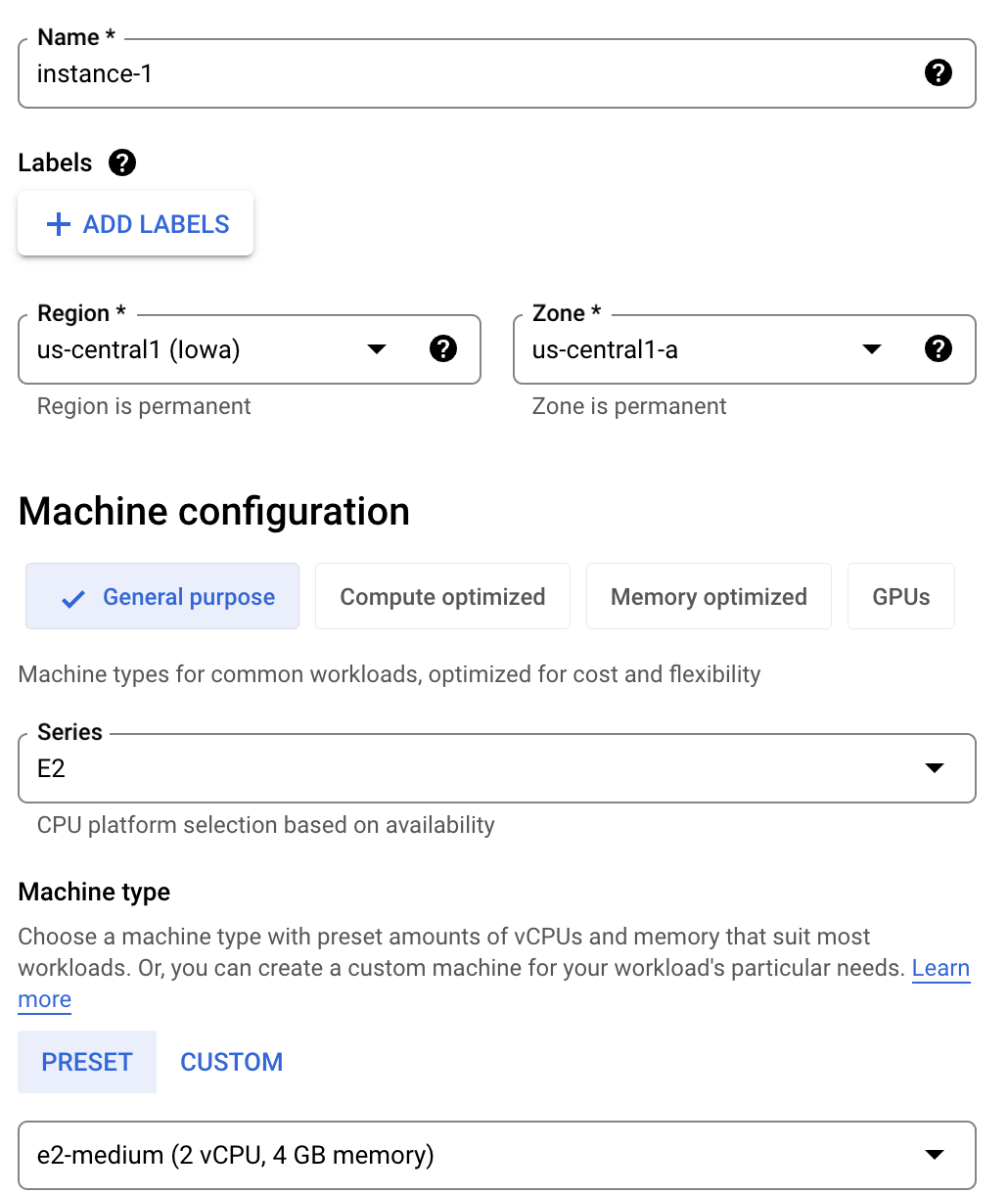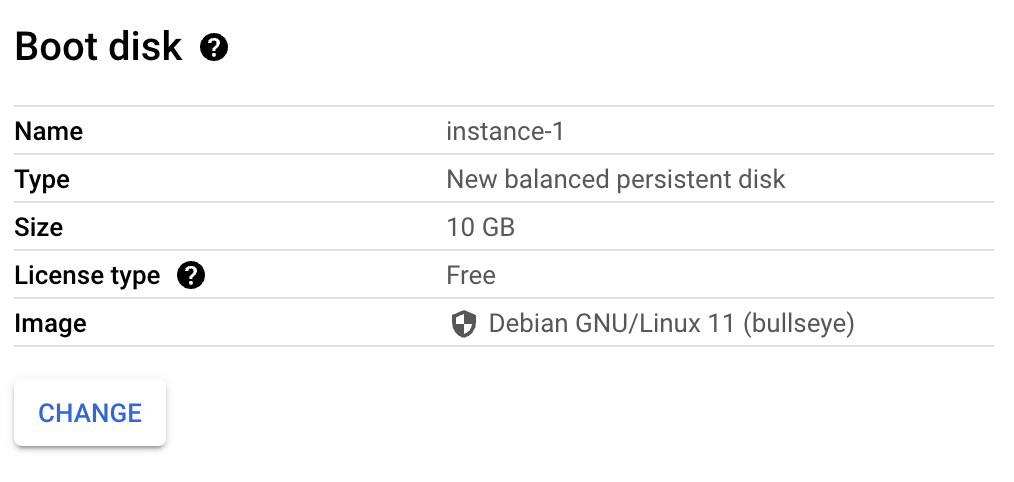Introduction
Google Compute Engine (GCE) is an Infrastructure as a Service (IaaS) offering from Google Cloud Platform (GCP), which allows you to run your applications on virtual machines (VMs) hosted on Google's extensive infrastructure. GCE provides a scalable, high-performance, and cost-effective solution for your computing needs, allowing you to focus on your applications while Google takes care of the underlying infrastructure. In this article, we will explore the basics of GCE, common parameters for creating VMs, and the features and benefits it offers.
Understanding Google Compute Engine (GCE)
What is GCE?
Google Compute Engine is a core component of GCP that provides the ability to create and manage virtual machines (VMs) in the cloud. These VMs can be customized according to your application requirements and run on Google's vast infrastructure, ensuring high availability, security, and performance. GCE offers an array of VM types, sizes, and configurations, giving you the flexibility to choose the best fit for your workloads.

Creating Virtual Machines (VMs) on GCE
When creating a VM on GCE, there are several common parameters you need to consider, including:
- Machine type: The virtual CPU (vCPU) and memory configuration of the VM, which determines the processing power and memory capacity available to your applications.
- Region and zone: The geographical location where your VM will be hosted, affecting latency, availability, and redundancy. GCP offers numerous regions and zones worldwide to ensure the best possible performance for your applications.
- Disk type and size: The type and size of the storage attached to the VM, which can be either SSD (solid-state drive) or HDD (hard disk drive). SSDs offer faster performance, while HDDs provide more cost-effective storage solutions.
- Operating system: The OS image installed on the VM, which can be a variety of Linux distributions or Windows Server versions.
- Network settings: The configuration of the VM's network connectivity, including its IP address, Virtual Private Cloud (VPC), and subnet.


Features and Benefits of GCE
Scalability
GCE allows you to quickly scale your VMs up or down to meet the changing demands of your applications. By leveraging the power of GCP's global infrastructure, you can easily add or remove VMs as needed, ensuring that your resources are always optimized for your workloads.
High Performance
With GCE, your applications run on Google's high-performance infrastructure, which is designed to provide low latency and high throughput. Additionally, GCE offers a variety of machine types, including general-purpose, memory-optimized, and compute-optimized options, enabling you to choose the best configuration for your specific workloads.
Cost Efficiency
GCE provides a pay-as-you-go pricing model, meaning you only pay for the resources you use. With sustained use discounts and preemptible VMs, you can further reduce your costs while still enjoying the performance and scalability benefits of GCE.
Security and Compliance
GCE VMs are built on Google's secure infrastructure, which includes features like encryption of data at rest and in transit, as well as compliance with industry standards such as GDPR and HIPAA. With GCE, you can trust that your data and applications are protected by Google's robust security measures.
Integration with GCP Services
GCE seamlessly integrates with other GCP services, such as Cloud Storage, Cloud SQL, and Kubernetes Engine, allowing you to create end-to-end solutions for your applications. By leveraging the power of GCP's comprehensive suite of services, you can build, deploy, and manage your applications more efficiently and effectively.
Custom VM Configurations
With GCE, you can create custom VM configurations tailored to your specific application requirements. This flexibility enables you to optimize resource allocation, ensuring that you only pay for the resources you need. You can also create VMs with GPUs or TPUs, which can significantly accelerate workloads like machine learning and high-performance computing.
Live Migration
GCE offers live migration, a feature that allows your VMs to be moved to another host within the same zone without any downtime. This ensures that your applications remain available even during infrastructure maintenance or hardware updates. With live migration, you can enjoy a more reliable and resilient infrastructure without any impact on your application performance.
Global Network Infrastructure
Leveraging Google's extensive global network infrastructure, GCE provides low-latency access to your applications from anywhere in the world. This ensures a fast and consistent user experience, regardless of the user's location. Additionally, GCE's global VPCs enable you to create VMs in different regions while still residing in the same VPC, simplifying network management and reducing latency between VMs.
Preemptible VM
A preemptible VM is a special type of virtual machine offered by Google Compute Engine that can be terminated by Google at any time. These VMs are designed for short-lived, non-critical workloads and are offered at a significantly lower cost compared to standard VMs. Preemptible VMs have a maximum runtime of 24 hours, and Google can terminate them if resources are needed for other tasks. However, if your workload can tolerate interruptions and doesn't require guaranteed availability, preemptible VMs can provide substantial cost savings.
Benefits of Using Preemptible VMs
- Cost savings: Preemptible VMs are priced up to 80% lower than regular VMs, making them an attractive option for cost-conscious users.
- Ideal for fault-tolerant workloads: Preemptible VMs are suitable for tasks that can handle interruptions, such as batch processing, data analysis, and machine learning training.
- Efficient resource utilization: By using preemptible VMs, you can make the most of Google's spare computing capacity, helping you achieve more with less.
Availability Choices
Google Compute Engine provides several options to ensure the high availability of your VMs:
- Regional managed instance groups: Deploy your VMs across multiple zones within a region to protect against zone failures.
- Global load balancing: Distribute traffic across VMs in multiple regions, ensuring that your application remains available even in the event of a regional outage.
Auto Restart
GCE offers an auto-restart feature that automatically restarts your VMs if they are terminated due to hardware failure or maintenance. This helps minimize downtime and ensures that your applications remain available.
Load Balancing
GCE provides built-in load balancing to distribute traffic evenly across your VMs. This helps ensure optimal performance and high availability for your applications. GCE supports various load balancing options, including HTTP(S), TCP/SSL, and UDP.
Common Machine Types in GCE
General-purpose machine types: N1, N2, N2D, E2
These machine types offer a balanced mix of vCPU and memory resources, making them suitable for a wide range of applications, such as web servers, small databases, and development environments. The cost of using these machine types varies depending on the specific type, vCPU, and memory configuration.
Memory-optimized machine types: M1, M2
Memory-optimized machine types provide more memory per vCPU, making them ideal for memory-intensive applications such as large databases, in-memory data processing, and high-performance computing. The cost of using memory-optimized machine types is generally higher than general-purpose machine types due to the increased memory resources.
Compute-optimized machine types: C2
Compute-optimized machine types offer higher vCPU performance, making them suitable for CPU-intensive applications like machine learning, video encoding, and scientific simulations. These machine types typically have a higher cost per vCPU but provide better performance for compute-bound workloads.
When selecting a machine type for your VM, consider the specific requirements of your application, including CPU, memory, and cost. By choosing the appropriate machine type, you can optimize resource allocation and ensure the best performance for your workloads.
Custom Machine Types
In addition to the predefined machine types, Google Compute Engine allows you to create custom machine types tailored to your specific application needs. With custom machine types, you can define the exact number of vCPUs and amount of memory required for your VMs, ensuring optimal resource utilization and cost efficiency.
Consider using custom machine types in the following scenarios:
- Your application has unique resource requirements that don't align with the predefined machine types.
- You want to optimize resource allocation to reduce costs without sacrificing performance.
- You need to fine-tune your VM configuration to meet specific performance or regulatory requirements.
GPUs and TPUs on GCE
Accelerating Workloads with GPUs
Google Compute Engine offers VMs with attached GPUs (Graphics Processing Units) to accelerate specific workloads, such as machine learning, high-performance computing, and graphics rendering. GPUs provide parallel processing capabilities that can significantly speed up computation-intensive tasks. GCE supports a range of NVIDIA GPUs, allowing you to choose the right GPU for your application.
Enhancing Machine Learning with TPUs
Tensor Processing Units (TPUs) are custom-designed application-specific integrated circuits (ASICs) developed by Google for machine learning workloads. TPUs are specifically optimized for TensorFlow, Google's open-source machine learning framework, and can deliver high performance at a lower cost per computation. By attaching TPUs to your GCE VMs, you can accelerate machine learning training and inference tasks, enhancing your application's performance and efficiency.
Conclusion
Google Compute Engine offers a comprehensive set of features and options to power your applications in the cloud. With its flexible VM configurations, preemptible VMs, high availability choices, auto-restart, load balancing, and support for GPUs and TPUs, GCE provides a robust and cost-effective infrastructure for a wide range of workloads. By leveraging the power and flexibility of GCE, you can optimize your resource utilization, reduce costs, and ensure the best possible performance for your applications.
About 8grams
We are a small DevOps Consulting Firm that has a mission to empower businesses with modern DevOps practices and technologies, enabling them to achieve digital transformation, improve efficiency, and drive growth.
Ready to transform your IT Operations and Software Development processes? Let's join forces and create innovative solutions that drive your business forward.
Subscribe to our newsletter for cutting-edge DevOps practices, tips, and insights delivered straight to your inbox!

